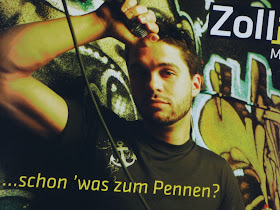Clear Lake, the largest freshwater lake entirely inside California, was named by early European settlers for the clarity of the fresh air above and around the lake. The local Pomo people called the lake Lypoyomi, meaning Big Water [1-3]. As verified by the California Air Resources Board, the lake area still has the cleanest air in California—and that, although volcanic gases are bubbling out of the lake water in Soda Bay north of the dormant Mt. Konocti volcano [4]. Over 300 species of birds make Clear Lake's water, air and surrounding landscape their home [1].
The picture above shows a view from Clear Lake State Park over Soda Bay and the Narrows near Glenhaven, which “divide” the lake in a north and a south part. The water of the lake is not clear, since its shallow body of water is naturally rich in nutrients (eutrophic): algae and cyanobacteria are native to Clear Lake. They grow, depending on cool or warm weather conditions, rise to the lake surface and decay into foul-smelling organic matter [5]. Notice that foul-smelling gases do not necessarily affect the clarity of air.
To conclude with a clear advice: avoid drinking untreated lake water and enjoy breathing the clear air in the vicinity of the lake.
Keywords: geography, vulcanology, ecosystems, Native Americans, history.
References and more to explore
[1] Terry Knight: In the Clear. Bay Nature April-June 2013, 23 (2), pp.12-15 [Apr-Jun 2013 Issue: baynature.org/issue/apr-jun-2013/].
[2] DavisWiki: Clear Lake [daviswiki.org/Clear_Lake].
[3] California's Lake County: Clear Lake [www.lakecounty.com/AboutLC/Explore/ClearLake.htm].
[4] California's Lake County: Mount Konocti [www.lakecounty.com/AboutLC/Explore/Konocti.htm].
[5] Sierra Club: What's Going on with Clear Lake? Some questions and answers [www.redwood.sierraclub.org/lake/CLQ.A.htm].
The picture above shows a view from Clear Lake State Park over Soda Bay and the Narrows near Glenhaven, which “divide” the lake in a north and a south part. The water of the lake is not clear, since its shallow body of water is naturally rich in nutrients (eutrophic): algae and cyanobacteria are native to Clear Lake. They grow, depending on cool or warm weather conditions, rise to the lake surface and decay into foul-smelling organic matter [5]. Notice that foul-smelling gases do not necessarily affect the clarity of air.
To conclude with a clear advice: avoid drinking untreated lake water and enjoy breathing the clear air in the vicinity of the lake.
Keywords: geography, vulcanology, ecosystems, Native Americans, history.
References and more to explore
[1] Terry Knight: In the Clear. Bay Nature April-June 2013, 23 (2), pp.12-15 [Apr-Jun 2013 Issue: baynature.org/issue/apr-jun-2013/].
[2] DavisWiki: Clear Lake [daviswiki.org/Clear_Lake].
[3] California's Lake County: Clear Lake [www.lakecounty.com/AboutLC/Explore/ClearLake.htm].
[4] California's Lake County: Mount Konocti [www.lakecounty.com/AboutLC/Explore/Konocti.htm].
[5] Sierra Club: What's Going on with Clear Lake? Some questions and answers [www.redwood.sierraclub.org/lake/CLQ.A.htm].


